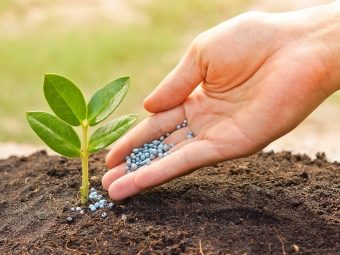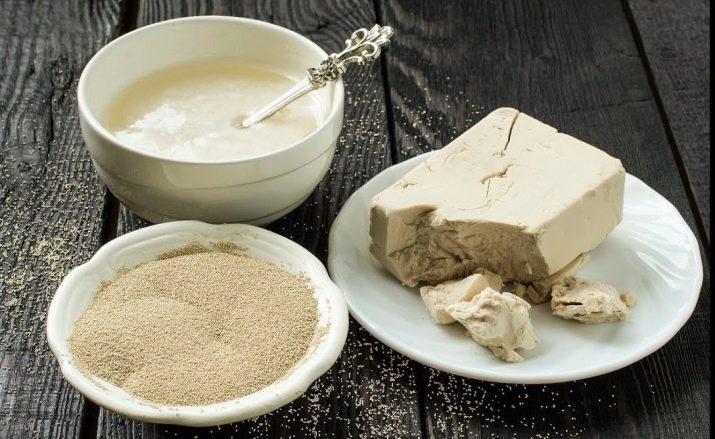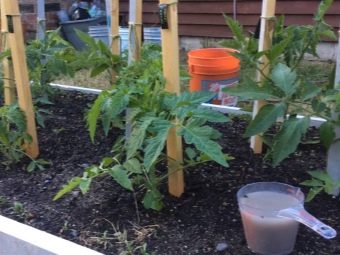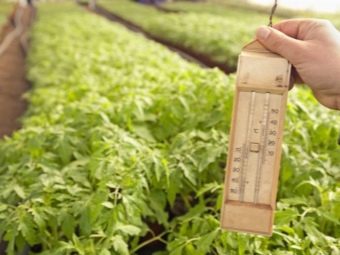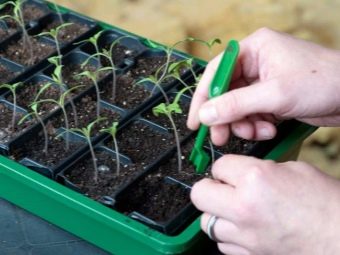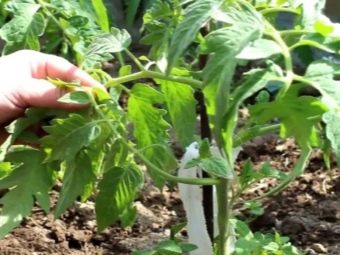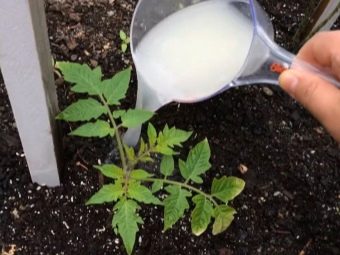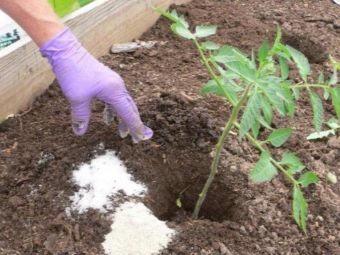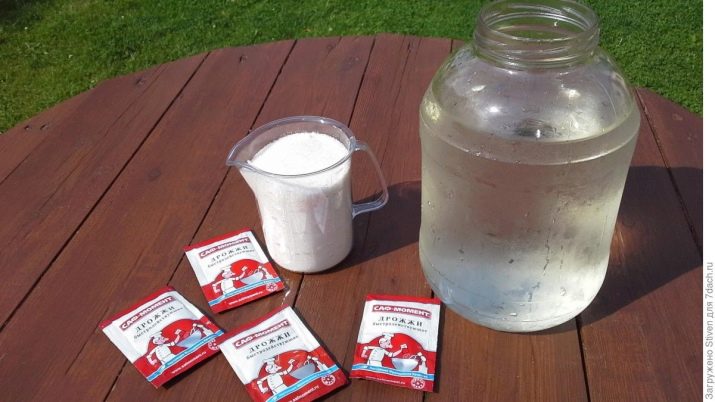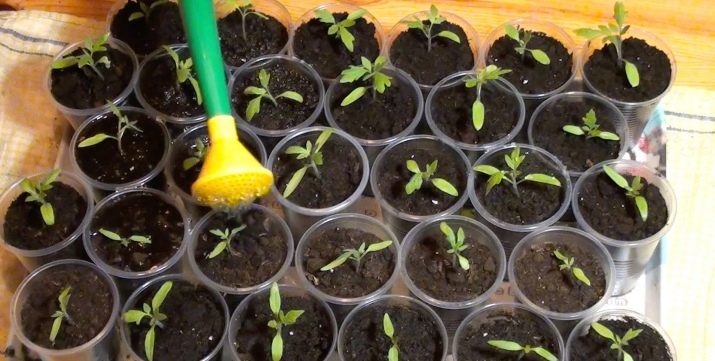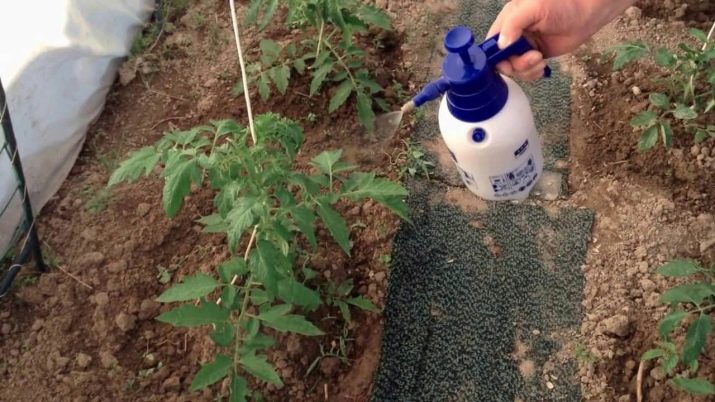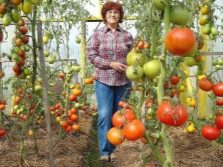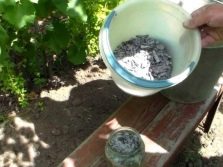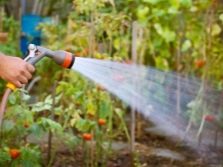How to feed tomatoes with yeast?

Today, vegetable crops are grown quite rarely without additional feeding, which is why a large assortment of various fertilizers is present in abundance. But in addition to highly specialized means to support the growth and development of plants, often used tools, the effectiveness of the use of which has been tested over the years. These products include yeast.
Special features
Asking to feed tomatoes, the main thing is not to overdo it, so as not to harm the plants. Most gardeners prefer to apply natural tomatoes that do not contain chemicals to feed tomatoes. Yeast compounds belong to this group of substances.
The solutions prepared on the basis of yeast are a very old and effective remedy that gradually faded into the background after the appearance of mineral fertilizers, which for some time supplanted popular methods of increasing the yield of vegetable crops and flowers.
However, everything new is a long-forgotten old, so over time, homemade organic products again become involved in the process of growing tomatoes, peppers and other vegetables, because organic matter does not cause much damage to the soil and has a positive effect on crop yields.
Yeast is a unicellular fungi that contain trace elements and proteins, which are essential for the growth of tomatoes. There are many different ways to make them under the plant.
Yeast compounds are considered to be preparations that are able to prevent the development of pathogenic microflora in the soil and to protect the plant from diseases. Compared with store facilities that have the same functional tasks, yeast stands out at an affordable price.
In the course of dissolution in water, they turn into a substance that can positively affect the root system of cultures.
Since substances are a growth promoter for vegetables, in the course of their use certain rules should be followed:
- When planning to use yeast solutions as a fertilizer in the open field or in the greenhouse, it is necessary to properly feed the soil with various organic elements in advance. In this case, you can reduce the risk of leaching of nutrients from the ground. Otherwise, the use of the product will lead to the fact that the soil will become quite poor in the presence of useful organics.
- Experienced gardeners recommend preparing a solution with yeast, while adding wood ash there. Such a combination of ingredients will avoid the loss of calcium and potassium in the soil.
- It is necessary to fertilize with compounds only with warm ground, otherwise all actions will have no meaning, because the yeast in the cold is not able to activate its properties.
It is worth noting this type of fertilizer, as black yeast, which has recently been in great demand among gardeners. Among the features of this tool is to highlight its improved characteristics, allowing to increase the endurance of crops. However, in order to avoid mistakes that may be made in the course of using a new type of fertilizer, it is necessary to strictly follow the instructions for use on the packaging and also beware of counterfeits.
In addition, when deciding in favor of feeding the tomato with yeast solutions, it is necessary to objectively assess the situation, making it clear that such means are not a panacea, and if tomatoes are planted in poorly fertile soil, it will not be possible to achieve a high yield of vegetables using yeast.
Advantages and disadvantages
Feeding tomatoes with yeast is distinguished by a number of positive features:
- Processed cultures will have good immunity, due to which they will become less susceptible to disease.
- The tomato will begin the active court of the root system.
- Vegetables after treatment with yeast compounds tolerate temperature fluctuations better.
- The soil becomes more saturated with trace elements, especially nitrogen and phosphorus. This happens due to the decomposition of microorganisms contained in the solution.
- As for tomato seedlings, after feeding with yeast, it adapts more quickly after picking.
- Active growth of leaves in the bush.
- The number of ovaries on the plant increases, in addition, new shoots appear.
- Yeast does not contain artificial ingredients, so the fruits will be environmentally friendly.
- This type of fertilizer is of low cost in comparison with synthetic drugs that are recommended as a top dressing for vegetables.
- To prepare a solution for watering is very simple. As a rule, the tool contains one or two additional components.
- There are no restrictions regarding the use of certain types of yeast, so products can be successfully used both in dry and in wet form. The main thing is to pay attention to the shelf life of the additive. As for the economy of consumption, it is better to use wet yeast in large areas.
Like any other product, feeding a tomato with yeast has several disadvantages. It is worthwhile to dwell on the following disadvantages that may arise after the procedures:
- since the additive stimulates the active growth of the plant, it will require more and more nutrients, which will lead to the depletion of the soil;
- due to the increased nitrogen content after the introduction of yeast in tomatoes, the green mass will rather actively grow, and the growth of fruits may stop.
Mechanism of action
Use in your garden as organic fertilizer will ensure that natural vegetables and fruits will be present on the dining table. Yeast is one of these supplements. In fact, it is a fungus enriched with microelements and vitamins.
When a product is dissolved, water receives a portion of nutrients, which, during watering plants and in the process of contact with microorganisms, release vital elements from the soil. Substances such as nitrogen, phosphorus, iron are transmitted through the soil to the tomatoes.
Yeast fungus does not lose its properties when temperature fluctuates, due to which it is amenable to drying and pressing.
When and how to feed?
Each gardener has his own individual recipe for the use of yeast. Someone prefers to water the tomatoes cooked composition quite often. For this, the additive is placed in the soil - a hole is made into which the leaven is placed, buried and watered abundantly. In any case, the choice of the method of using yeast depends not only on the person, but also on the climatic conditions in which the tomatoes grow.
The root feeding of vegetables is performed during the period when the first leaves began to appear on the bushes. According to experts, the introduction of additives at this time is not mandatory, the decision will be made by everyone.
But after the second picking of tomatoes, it is recommended to feed the culture. The composition is prepared according to the following recipe:
- You need to mix 1 sachet of product with a glass of wood ash and 5 teaspoons of sugar;
- the resulting mixture is diluted with water at room temperature and allowed to infuse until the concentrate begins to “play”;
- then add more liquid in the ratio of 1:10;
- Watering plants should be done with a small watering can.
After planting the tomatoes in the ground after 1-2 weeks after the appearance of the buds, it is necessary to conduct another watering with yeast composition.
Watering solution is prepared according to the following recipe:
- 100 grams of yeast must be diluted in 3 liters of water, adding 2 tablespoons of sugar.
- The composition must be placed in a warm place for a few days. At the end of the fermentation process, the solution is ready for use.
- One cup of the resulting infusion will be sufficient for dilution in 10 liters of pure water. After diluting the water with this composition, watering the tomatoes is performed.
As an additional component, you can use a variety of herbal infusions, for example, nettle or hop.
To make a root feed tomato, you can also prepare fertilizer as follows:
- you need to mix the extract of chicken manure (0.5 liters), 10 grams of yeast, 5 tablespoons of sugar and half a liter of wood ash;
- 10 liters of purified water are added to the mixture, after which the concentrate must be infused for 7 days;
- after dilution with water, the composition is ready to fertilize the plants.
Catching the fertilizing of tomatoes with yeast concentrates, you should carefully consider the dosage of fertilizer. As practice shows, for seedlings that have already undergone the adaptation process, about 0.5 liters of supplement are needed, adult tomatoes require more fertilizer - on average about 2 liters.
Foliar fertilizer is carried out in situations where the plant roots can not be fed, and the culture looks weak. In addition, as experience shows, it is the introduction of foliar fertilizer that is more beneficial for young crops than root dressing.
This kind of enrichment of vegetable crops with useful trace elements can be safely used from the very beginning of the growth of tomatoes, even before the picking. This is explained by such positive features from the use of yeast for plants:
- they fill tomatoes with microelements, which through the capillaries of the stems and green mass enter the body of the plant;
- high efficiency and quick results - even the weakest seedlings will quickly acquire foliage and begin to actively develop;
- with non-root fertilizer plants yeast nutrients are better absorbed;
- in contrast to root fertilizer, where part of the beneficial microelements goes into the soil, and then washed away by rains, the foliar fertilizer gets the vegetable in full;
- the consumption of the product in this case is significantly reduced, which will save on the use of nutritional supplements.
The best thing to feed the seedlings and young tomato bushes in the first half of the growing season. The composition must be diluted with water more than with the root method of fertilizer, so that the concentration of yeast is no more gentle.
For vegetable crops that develop in the open field, treatment with the solution should be carried out in the evening or on an overcast day to eliminate the risk of burns on the foliage. In addition, the composition of the scorching sun simply dries on the plant, as a result of the useful substances do not have time to absorb.
Greenhouse tomatoes are sprayed in the early morning, because by evening the foliage on the plant must be dry.
Do not rush during the processing of plants, because you need to feed not only the outer part of the leaf, but also the outer, not forgetting about the stem of each young bush.
Cooking recipes
Since yeast fertilizer for vegetable crops has been used by gardeners for a very long time, there are quite a few recipes for its preparation. The method of dissolving an additive in pasteurized milk is considered the most popular.
Recipe:
- One kilogram of yeast is mixed with 5 liters of milk. After dissolving the additive, the mixture is allowed to infuse in a warm room for one day.
- After that, the resulting concentrate is diluted with pure water in the proportion of 0.5 liters to 10 liters of water. About 10 buckets of nutrient composition for vegetables come out of the resulting fertilizer.
- Root irrigation is carried out at the rate of half a liter of solution per plant. Quite often, various organic substances are additionally introduced into the concentrate.
Feeding crops with yeast, which grows in an apartment, where the seedlings often do not have enough sunlight for full development, is capable of leveling this deficiency.Getting a similar fertilizer, tomatoes form a good root system.
In addition, yeast fertilizer does not allow the seedlings to stretch strongly, the plants are easier to adapt after planting in open ground.
To feed the seedlings tomato fertilizer is prepared as follows:
- 10 grams of yeast and 2 spoons of sugar are dissolved in 10 liters of water at room temperature;
- for the activation of useful substances, the composition must be allowed to warm in a few hours, after which the fertilizer will be ready for use;
- diluted composition in a ratio of 1: 5.
After 2-3 days, you can already observe the results from the introduction of feeding for tomatoes - the foliage becomes dense, the seedlings increase in size.
It is worth noting the recipe of yeast fertilizer for tomatoes, which uses a fresh additive. Cooking:
- 100 grams of yeast dissolve in 0.5 liters of water;
- after their complete dissolution in the liquid, an additional 5 liters of purified water is added.
Additive can be immediately used for feeding tomatoes.
Tips
Objectively assessing the effectiveness of using yeast for feeding tomatoes, it can be argued that this product will provide a good harvest of vegetables with a minimum investment of money. The main issue remains the proper use of such fertilizer. Below are some useful recommendations for the use of yeast additives:
- The effectiveness of the product to a significant extent will increase if it is used in the already heated soil. That is why experienced gardeners advise to carry out the first introduction of the composition in early June or late May, depending on the temperature.
- To use the yeast is only in moist soil.
- It is necessary to comply with the measure in the course of feeding the tomato, so carrying out 3-4 dressings per season will be optimal for a good harvest of vegetables.
- Since the additive removes potassium from the soil, the lack of this trace element needs to be compensated. In this matter, it will be useful to apply infusions of wood ash for watering or to scatter it in dry form between rows of crops.
- There is no unequivocal opinion regarding the greater efficiency of this or that type of product used. Therefore, it is worth considering that fresh yeast will provide high yields, and fermented ferment will accelerate tomato growth, but the plant will grow old very quickly.
To evenly distribute the composition between the plants, it is best to use a watering can with a diffuser when watering.
For information on how to feed tomatoes with yeast, see the following video.


